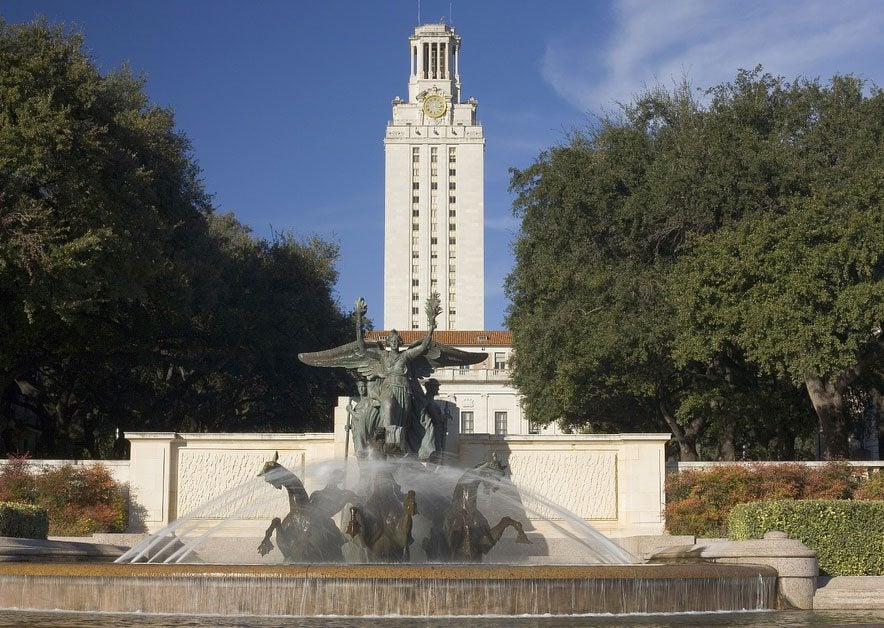
Fisher v. University of Texas: Have We Reached Critical Mass?

How many minority students at a university are enough? That was the question facing the U.S. Supreme Court last month during oral arguments in the affirmative-action case Fisher v. University of Texas.
When Abigail Fisher, a young white woman from Sugar Land, failed to get into UT-Austin in 2008, she sued the university for her $100 application fee, saying the school denied her entry because of her race. Fisher did not finish high school in the top 10 percent of her class, and UT says she wouldn’t have been admitted regardless of her race.
UT and many other public universities base their admission policies on the landmark 2003 case Grutter v. Bollinger, in which the Supreme Court held that the University of Michigan Law School’s interest in reaching a “critical mass” of minority students was constitutional because it was only a limited factor in the admission process. The school argued that such a critical mass is an important component of the learning environment for all students.
But what is critical mass, and has UT reached it?
A critical mass of minorities, as described in the Grutter decision, would “ensure that these minority students do not feel isolated or like spokespersons for their race; … provide adequate opportunities for the type of interaction upon which the educational benefits of diversity depend; and … challenge all students to think critically and reexamine stereotypes.”
Here is how UT’s admission policy is designed to create such a critical mass: First, the school admits top-ten-percent graduates from each high school in Texas, up to 75 percent of admissions. While the percentage plan helps ensure a baseline of minority admissions, Gregory Garre, representing UT before the court, argued that the minorities who are admitted to UT still tend to come from racially segregated, and often economically disadvantaged, schools.
UT then considers a variety of factors—including race—in filling the remaining spots. The latitude to consider race is important, Garre argued, because a minority student who doesn’t come from a low-income background is “precisely the kind of candidate that’s going to come on campus, help to break down racial barriers, work across racial lines [and] dispel stereotypes.”
After the Grutter decision, UT conducted a study of its minority students to discern whether they felt isolated. According to the study, they did. That’s not surprising at a university that, as recently as last month, was dealing with predominantly white fraternity and sorority members dressing up as Mexican stereotypes at parties, and where, last semester, the student newspaper The Daily Texan printed a cartoon containing an African-American racial slur.
The issues UT students are grappling with are issues their parents and grandparents have yet to reconcile. Affirmative action was created during the civil rights era as a Band-Aid for the institutionalized urban poverty
and structural inequalities that have always existed in this country. As long as those remain in place, there will be a need for affirmative action. It’s not a numerical change that needs to happen, it’s a sea change.
Fisher’s lawyer Bert Rein argued that “critical mass” must be defined, along with the point at which we can say a university has achieved it. As it stands, he said, UT has too much leeway to continue affirmative action admissions indefinitely. But UT can’t define critical mass as, say, a percentage of the student body, because the court decided in Grutter that doing so would create an unconstitutional quota system. It’s a catch-22 for the entire concept of critical mass that Rein said is sure to be its downfall, whether in this case or another in the future. Fisher’s lawyers are asking the court to not only find that UT’s top 10 percent rule doesn’t satisfy Grutter—they’re asking the court to overturn Grutter entirely.
The court isn’t expected to make its decision until early next year. With Justice Elena Kagan recused because of a conflict—she was involved in the case years ago in a lower court—the Supreme Court’s conservative justices have an outsized influence on the outcome. The court could destroy affirmative action, or it could seriously injure it. Look at UT today, though, and you can see why an admission policy aimed at achieving critical mass is as important as ever.


